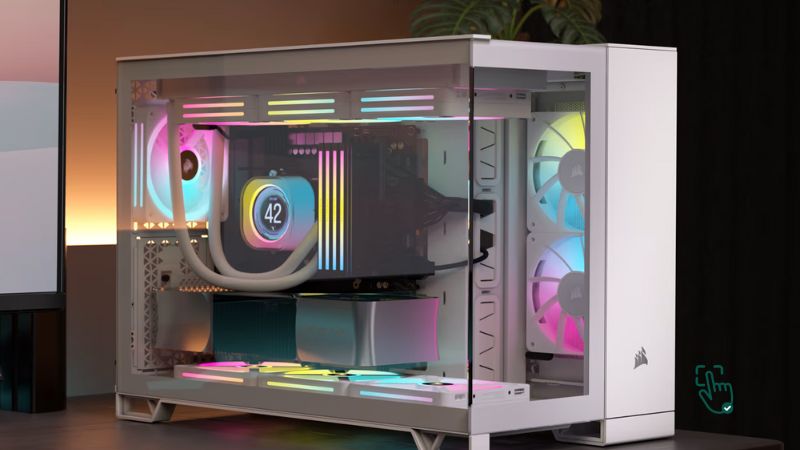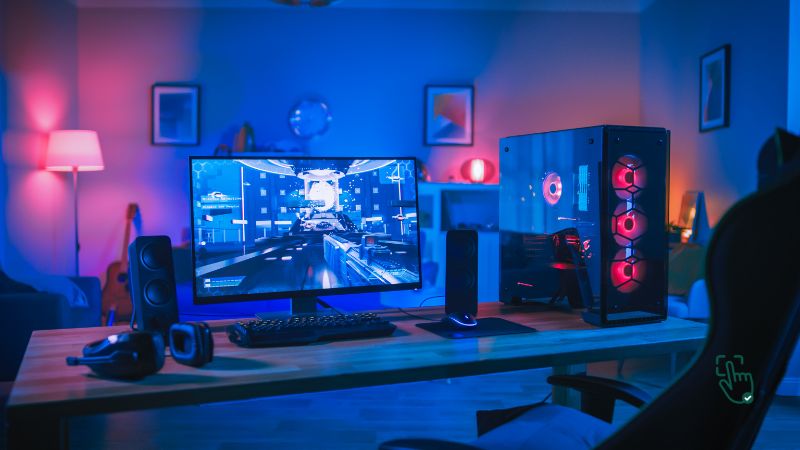
When it comes to building or upgrading your PC, the CPU casing (or PC case) is more than just a box to keep your parts safe. It affects cooling, noise, expandability, and even the style of your setup. With so many cases out there, picking the right one can be tricky—especially when you’re faced with a sea of choices promising the best airflow, sleek designs, and various budget-friendly or premium options. So, let’s dive in to explore some of the best CPU casings, what to look for, and which ones are worth your hard-earned cash.
What Makes a Good CPU Casing?
A CPU casing isn’t just a pretty shell. It impacts your PC’s performance, cooling, and ease of access when it comes to upgrades. Here’s what separates a solid case from a headache:
- Airflow: Good airflow is essential for keeping your CPU and other components cool. Look for cases with well-placed fans, mesh panels, and ventilation points.
- Cable Management: An ideal case should have enough space for cable routing to keep the interior neat, which helps airflow and makes future upgrades easier.
- Build Quality: High-quality materials not only improve aesthetics but also enhance durability.
- Size and Compatibility: Make sure your case fits your motherboard size and has enough room for all your components, especially your graphics card and CPU cooler.
Best CPU Casing Options in 2024
1. NZXT H510 – The Stylish All-Rounder
- Pros: Sleek design, tempered glass panel, easy cable management.
- Cons: Limited front airflow, only comes with two pre-installed fans.
The NZXT H510 is a go-to for builders who love a minimalist look. It offers a tempered glass side panel that lets you showcase your hardware. While it doesn’t have the best front airflow, its rear and top fans do a good job with exhaust. It’s best suited for mid-range builds rather than high-performance systems that require extensive cooling.
2. Corsair 4000D Airflow – Best for Cooling
- Pros: Fantastic airflow, spacious interior, easy cable management.
- Cons: Lacks a USB-C port in the front panel.
If you’re all about keeping your components as cool as possible, the Corsair 4000D Airflow is a top pick. Designed with mesh panels and optimized fan placement, this case provides top-notch ventilation, making it perfect for high-performance CPUs and GPUs. It’s spacious enough for larger components and allows for great cable management, but it does lack a USB-C front port, which could be a downside for some users.
3. Lian Li PC-O11 Dynamic – Perfect for Custom Builds
- Pros: Dual-chamber design, tons of room for customization, stunning aesthetic.
- Cons: Large footprint, not ideal for budget builds.
The Lian Li PC-O11 Dynamic is famous in the PC building community, especially among those who like to go all-out with custom water-cooling setups. Its dual-chamber layout separates the power supply and cables from the main components, giving a clean look. This case is a bit on the pricey side, but for enthusiasts who want both function and form, it’s worth every penny.
4. Cooler Master MasterBox Q300L – Best Budget-Friendly Option
- Pros: Compact, affordable, decent airflow for the price.
- Cons: Basic build quality, limited cable management options.
For builders on a budget, the Cooler Master MasterBox Q300L provides a compact design that fits most basic setups. It’s a budget case that doesn’t skimp on airflow, thanks to its perforated front and top panels. However, don’t expect premium build quality or spacious cable management options.
Why Choosing the Right Case Matters
Selecting the right CPU casing affects more than just looks. Here’s why your choice can make or break your PC experience:
- Thermal Performance: Poor airflow can lead to overheating, which might throttle your components and shorten their lifespan. A good case ensures your system stays cool under heavy loads.
- Convenience and Upgradability: Easy access to internal parts means future upgrades or repairs are much simpler. Cases with removable drive cages, side panels, and tool-free features make life easier.
- Noise Levels: Some cases come with noise-dampening materials that help keep your rig quieter. This is especially helpful if you’re planning on using powerful components or want a silent workspace.
How to Choose the Best CPU Casing for Your Needs
- Size Matters
- Mid Tower: Fits most standard builds and motherboards.
- Full Tower: Ideal for larger setups with custom water cooling.
- Mini Tower: Compact, but might be limited in terms of component compatibility.
- Cooling Options
- Look for cases that offer multiple fan mounts or radiator support if you’re going for water cooling. Mesh panels provide better airflow than solid panels.
- Design and Aesthetic
- Your PC case reflects your personality and style. Go for a case that aligns with your aesthetic preferences, whether it’s RGB lighting, a minimalist look, or a fully glass design.
- Front Panel Connectivity
- If you frequently use USB-C or audio jacks, make sure your case’s front panel has the ports you need.
Pros and Cons of Popular CPU Cases
Let’s break down some popular cases and why they may (or may not) be the right fit:
| Case Model | Pros | Cons |
|---|---|---|
| NZXT H510 | Sleek design, good cable management | Limited airflow |
| Corsair 4000D Airflow | Top-notch cooling, spacious interior | No USB-C front panel |
| Lian Li PC-O11 Dynamic | Tons of room, stylish dual-chamber | Large footprint, higher price |
| Cooler Master Q300L | Budget-friendly, decent airflow | Basic build quality |
When and Where to Buy a CPU Casing
Timing can make a big difference. Look out for discounts during big sale events like Black Friday and Cyber Monday. Check sites like Amazon, Newegg, and Best Buy for frequent sales and deals. Make sure to buy from reliable retailers to avoid issues with damaged or low-quality cases.
Common Issues with CPU Casings
It’s not all perfect. Some cases have their drawbacks, and it’s good to know about them before you hit “buy.”
- Temperature Control in Small Cases: Compact cases might look sleek, but they can get hot quickly. They lack the room for multiple fans or large GPUs, which can lead to overheating.
- Cable Management in Budget Cases: Low-cost cases often skimp on cable management space, making your build look messy and potentially blocking airflow.
- Heavy and Bulky Cases: High-performance or full-tower cases are often heavy, making it hard to move your setup around if you’re not settled into one spot.
Conclusion
Top Picks for the Best CPU Casing in 2024
NZXT H510 for sleek design fans, Corsair 4000D Airflow for performance seekers, Lian Li PC-O11 Dynamic for custom build enthusiasts, and Cooler Master MasterBox Q300L if you’re on a tight budget. Each of these CPU casings brings something unique, catering to different needs, styles, and budgets.



